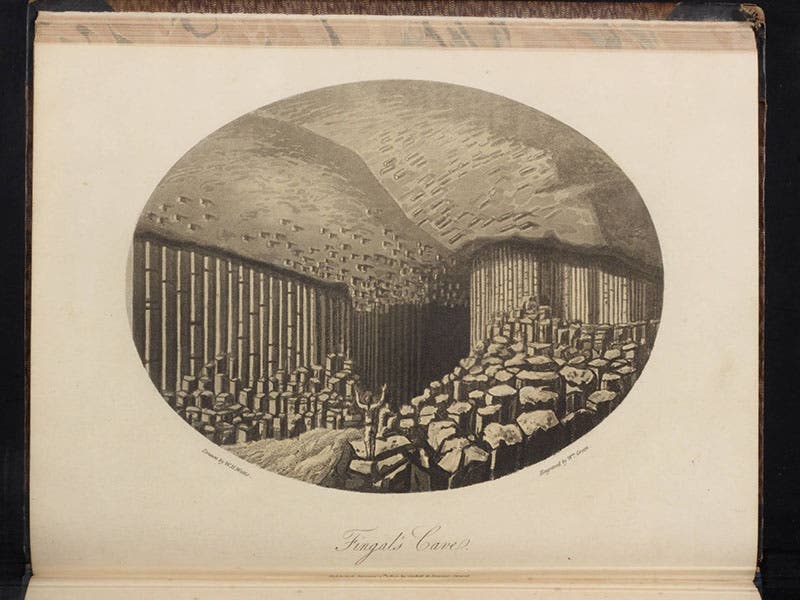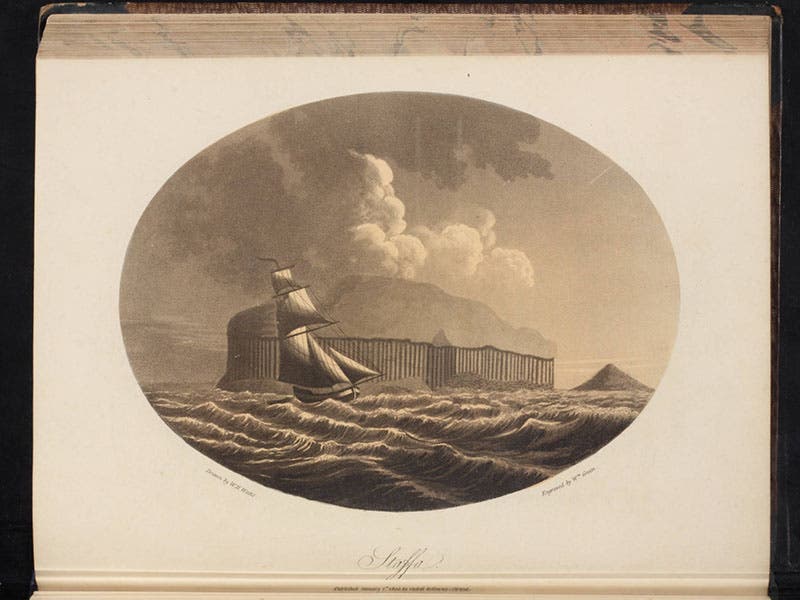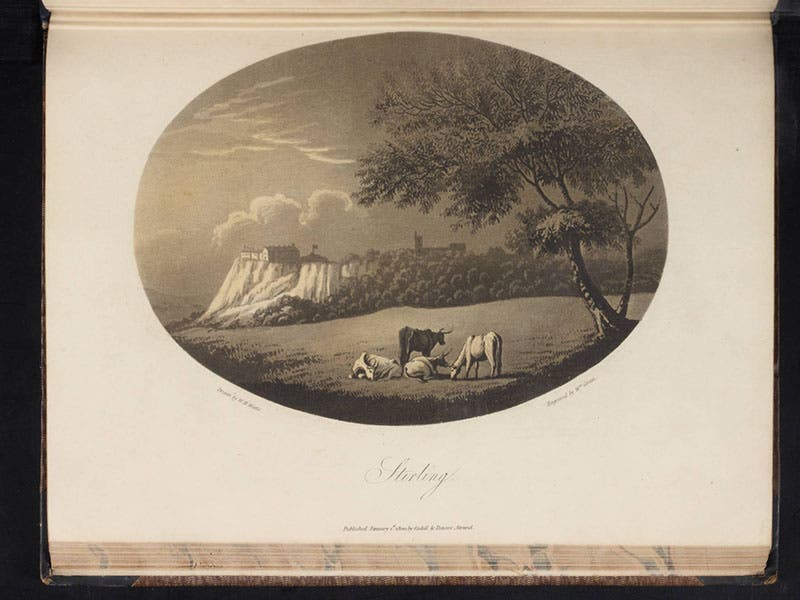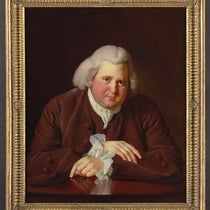Scientist of the Day - Thomas Garnett
Thomas Garnett, a Scottish chemist and geologist, was born Apr. 21, 1766. He studied chemistry under Joseph Black at Edinburgh, and then taught for a short time at the newly-founded Royal Institution in London, before his early death, at age 36, in 1802. He is best remembered for a travel book he wrote, Observations on a Tour through the Highlands and Part of the Western Isles of Scotland (1800). At the time, there was a controversy swirling among geologists, as to whether basalt was a volcanic or a sedimentary rock. Scotland is full of varieties of basalt, which the Scots call “whinstone”, and Garnett seems to have visited all the important whinstone locations, such as Fingal’s Cave in the Hebrides (first image above, with detail following), which sits on the Isle of Staffa (third image), illustrating many of these with charming aquatints in his book (and including the famous Loch Lomond, fourth image).
Another site he visited was Stirling Castle, north-west of Edinburgh. It sits on a dramatic whinstone sill and is one of the most perfectly situated fortresses you would ever want to see (fifth image, with detail following). Ten years earlier, James Hutton had gazed on a similar whinstone sill, the Salisbury Crags of Edinburgh, and had found evidence there that the Crags were once molten volcanic rock. Stirling Castle Rock, we now know, had a similar origin. We displayed Garnett’s book in 2004 in our exhibition, Vulcan’s Forge and Fingal’s Cave.
Dr. William B. Ashworth, Jr., Consultant for the History of Science, Linda Hall Library and Associate Professor, Department of History, University of Missouri-Kansas City. Comments or corrections are welcome; please direct to ashworthw@umkc.edu.












